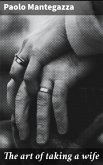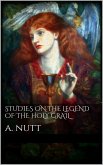In "The Art of Taking a Wife," Paolo Mantegazza explores the intricate dynamics of marriage and relationships set against the societal norms of 19th-century Italy. This work combines a mix of philosophical musings, practical advice, and anthropological observations, revealing Mantegazza's deep understanding of human emotions and societal constructs. Through an engaging narrative style enriched with vivid descriptions and astute analyses, the book challenges contemporary views on matrimony, highlighting both its romantic allure and its inherent complexities. Paolo Mantegazza, a renowned physician and writer, was deeply influenced by the cultural and scientific movements of his time, including Romanticism and naturalism. His experiences in the medical field and his studies of human behavior undoubtedly informed this exploration of marriage. Mantegazza's unique perspective draws from both personal experiences and broader societal observations, making his reflections resonate with readers seeking a deeper understanding of love and companionship. This book is a compelling read for those interested in sociology, psychology, or the evolution of marriage traditions. Mantegazza's exploration of love and partnership provides timeless insights that are equally relevant in contemporary discussions around relationships. In bridging personal anecdotes with societal critique, "The Art of Taking a Wife" offers a profound reflection on the essence of human connection.
Dieser Download kann aus rechtlichen Gründen nur mit Rechnungsadresse in A, B, BG, CY, CZ, D, DK, EW, E, FIN, F, GR, H, IRL, I, LT, L, LR, M, NL, PL, P, R, S, SLO, SK ausgeliefert werden.









